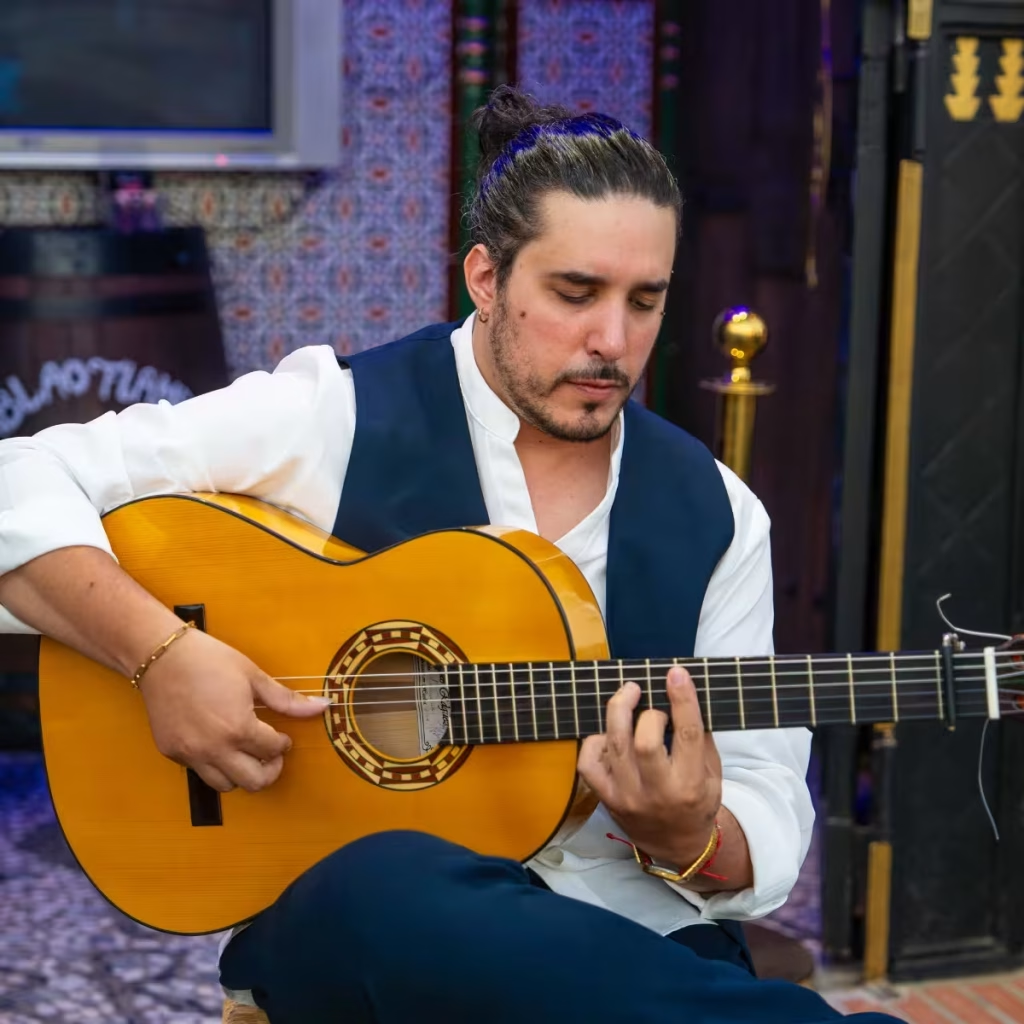Flamenco is an art with a lot of feeling that was declared a few years ago by UNESCO as an intangible heritage of Humanity.
It has many elements that make it special, among them, the instruments. The instruments of flamenco bring
Today we talk in depth about the instruments of flamenco, which are the most used, how they are usually used and why they are so special.
The Flamenco Guitar: the Melodic Heart
One of the distinctive instruments of flamenco is the flamenco guitar, a version of the Spanish guitar.
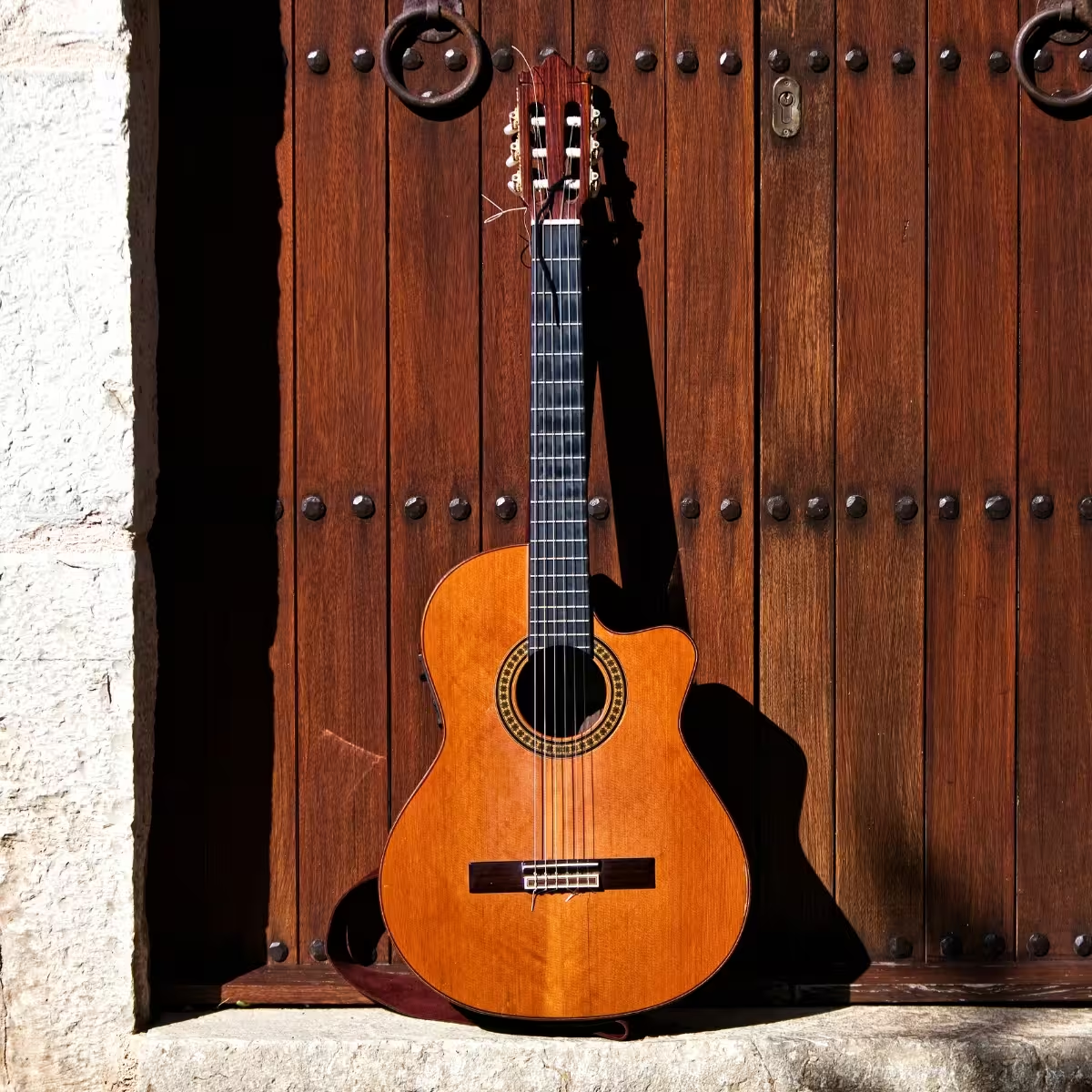
In fact, it differs from it in that the flamenco is a little lighter and is usually made of woods that have a bright and percussive sound. Some of the woods used are German spruce, Canadian red cedar, Spanish cypress or maple.
- Function: The guitar is the one that marks the harmony, dialogues with the singing and provides support to the dance.
- Style: Its rasgueados, alzapúas and golpes are crucial to mark the compás.
- Recognized artists: Among the most famous flamenco guitarists, we could highlight Paco de Lucía, Tomatito and Vicente Amigo have taken their touch to the top of the art.
The Flamenco Cajón: the Pulse of the Earth
As a curious fact, the cajón is not an instrument originating in Spain, but comes from Peru.
In fact, it began to be incorporated into flamenco in the 70s, thanks to Paco de Lucía, and since then, this instrument has been linked to this art.
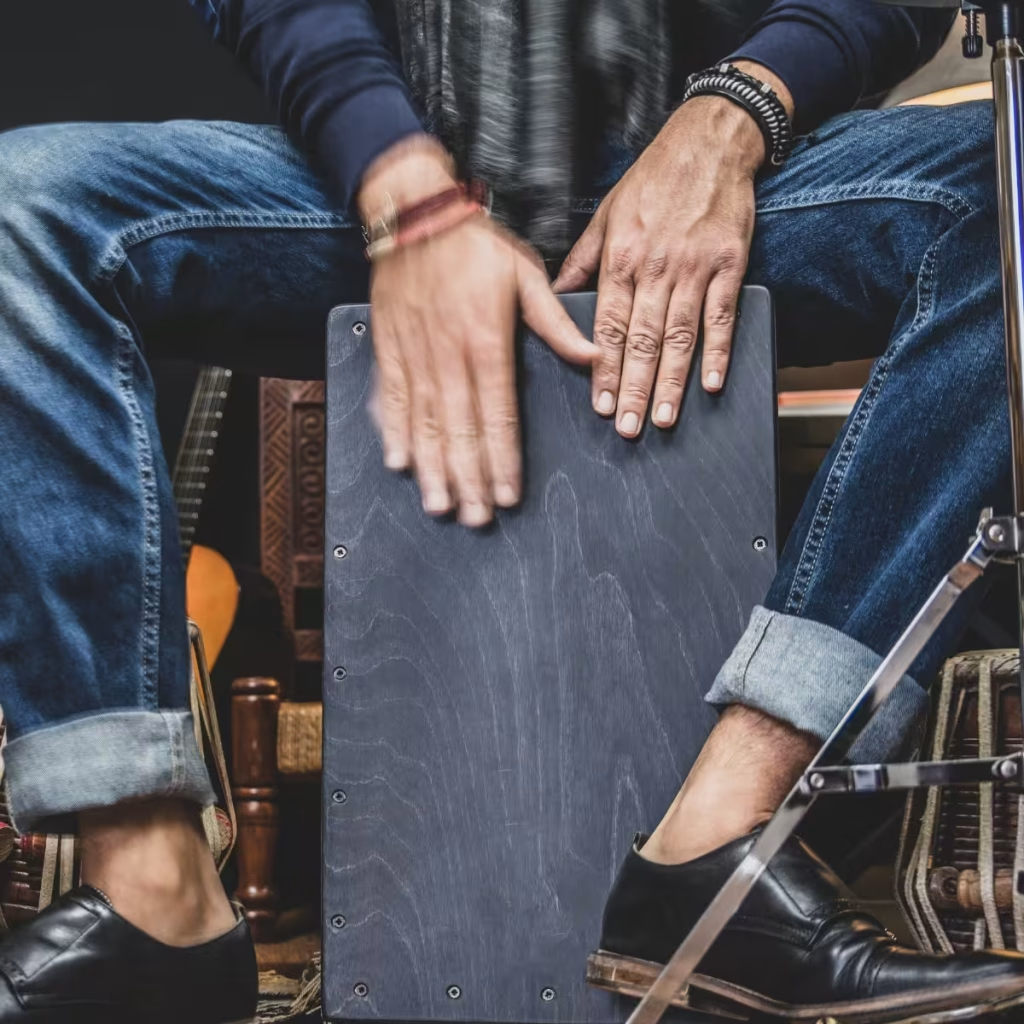
- Function: The flamenco cajón gives rhythm and serious percussion to the song, marking bulerías, alergías or tangos with greater forcefulness.
- Particularity: It is played sitting on it, hitting with the hands and mixing high-pitched sounds with low-pitched ones.
Currently, a modern flamenco group is not conceived without the cajón as a rhythmic base.
The Castanets: Touch of Tradition and Elegance
The castanets are not an instrument that is put into all flamenco styles, but we can also say that it is a symbolic instrument of this art. They are widely used in the more stylized flamenco dance.
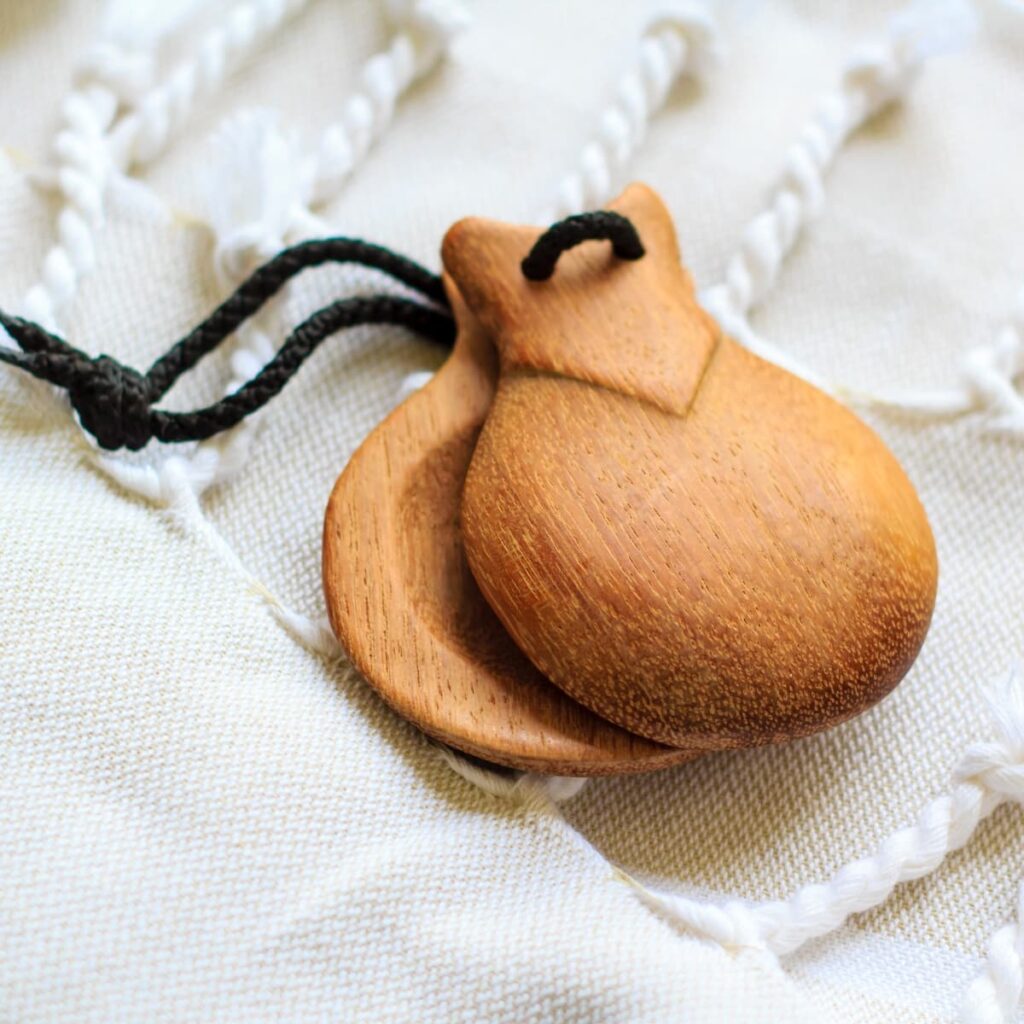
- Function: This instrument accompanies the movement of the hands and arms of the dancers, providing a rhythmic and dry sound.
- History: Its use has been used for centuries in Iberian folk dances for centuries, becoming part of the DNA of flamenco.
The sound of the castanets provides drama and precision to the dance, particularly in sevillanas and boleras.
Las Palmas: the Human Instrument
Although it could not be put inside a material instrument, there is no doubt that flamenco palmas are an icon to contribute to the melody. They are the purest instrument, the body itself.
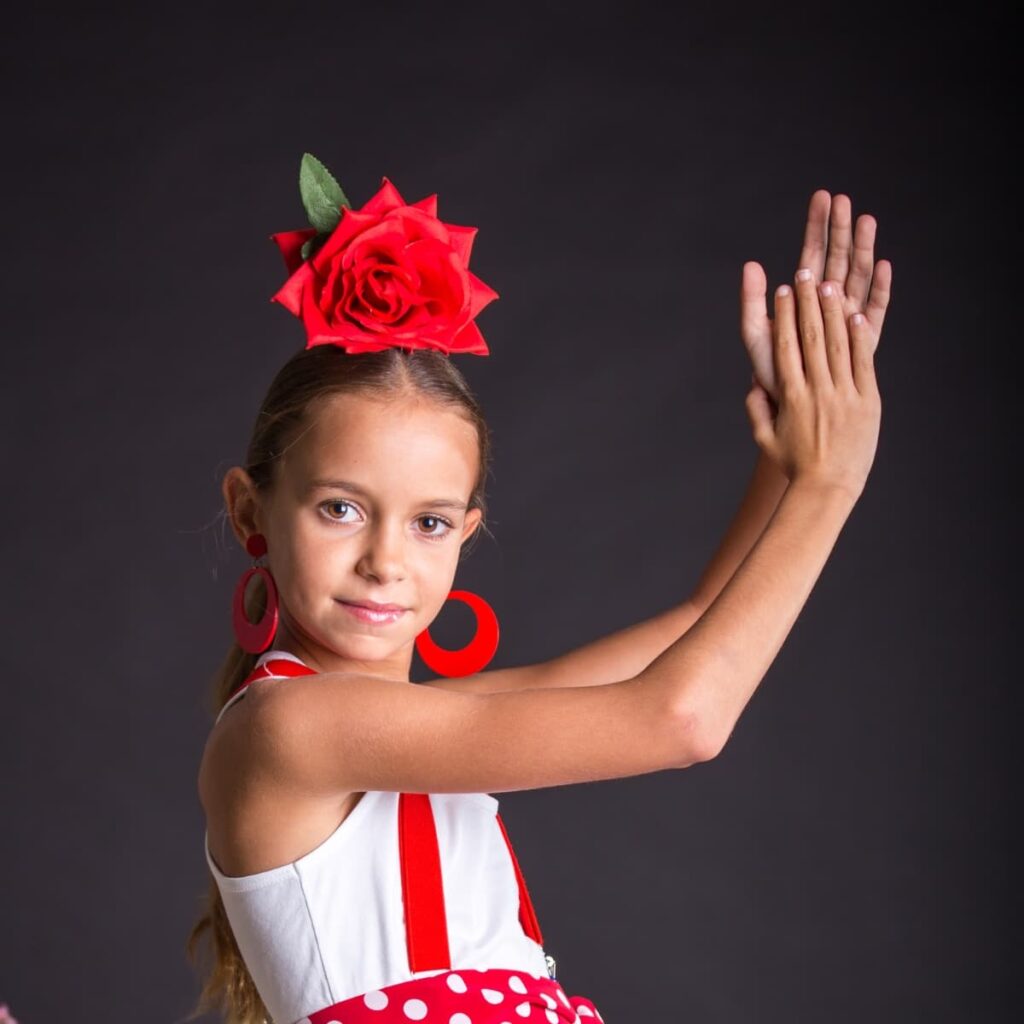
- Function: They are very important to mark the compás and accompany the singing and dancing.
- Types: There are several types, there are palmas sordas (soft and muted) and palmas claras (more sonorous and bright).
- Cultural Value: In addition to marking the rhythm, they bring the collective energy of the artists.
In a show, palmas are as essential as the guitar, because they maintain the tension and emotion in each flamenco palo.
Flamenco Voice: the Original Instrument and the Soul of Art
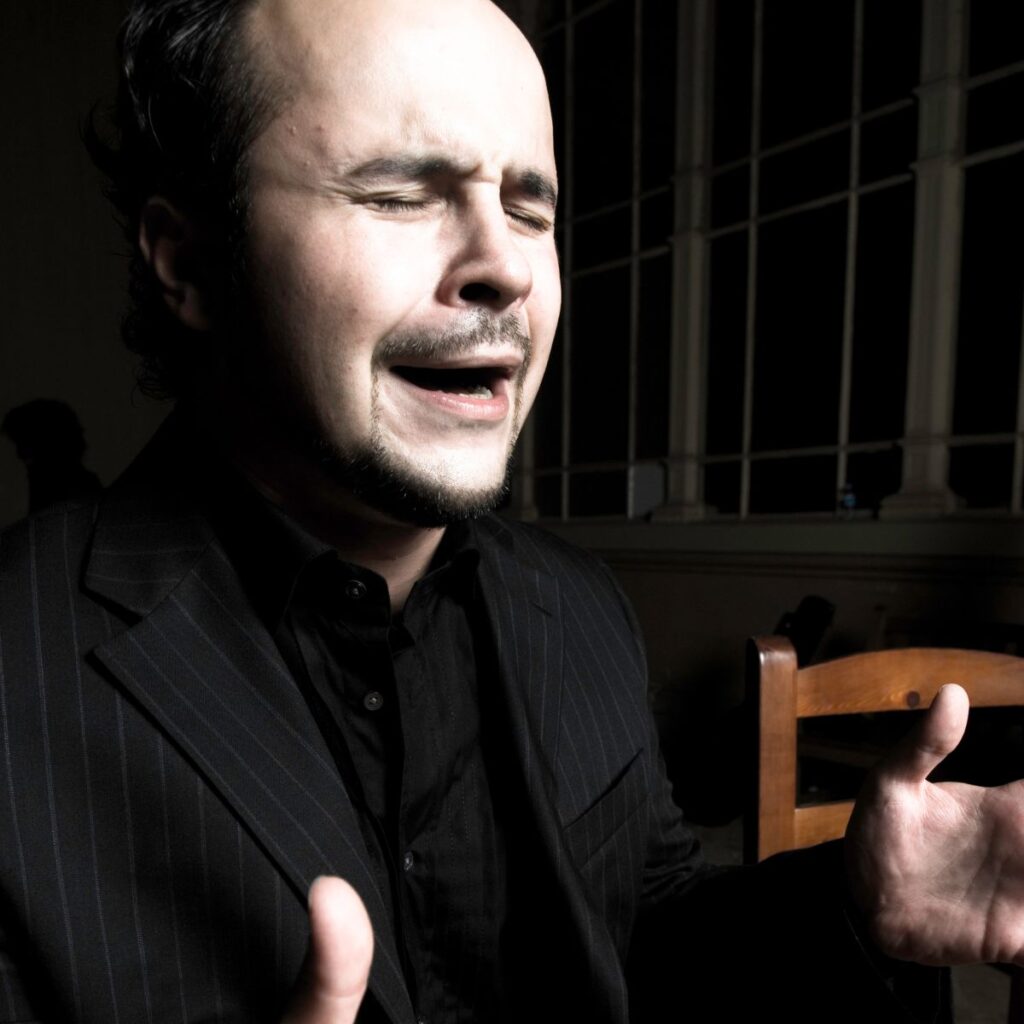
Flamenco singing is the origin of everything, beyond any string or percussion.
It is possibly the most important instrument, before guitars and cajones, there was the broken and deep voice that told sorrows, joys and experiences.
- Function: It is the guide that marks the way to the rest of the instruments.
- Characteristics: The quejío, the melismas and an unequaled expressive force stand out.
- Featured artists: Names like Camarón de la Isla, La Niña de los Peines and Enrique Morente are the embodiment of this art.
Singing is not just an instrument; it is the very soul of flamenco.
Other Flamenco Instruments
Currently, there are multiple instruments that have been integrated into flamenco because it is a living and evolving art.
Flamenco has been merging with other musical styles, and some instruments used are the violin or flute, electric bass, or the cajita or djembe.
Each flamenco instrument (the guitar, the cajón, the palmas, the castanets and the voice) has its role within the show. Knowing a little more about them is knowing a little more about the essence of Andalusia and a cultural heritage that continues to evolve without losing its roots.

